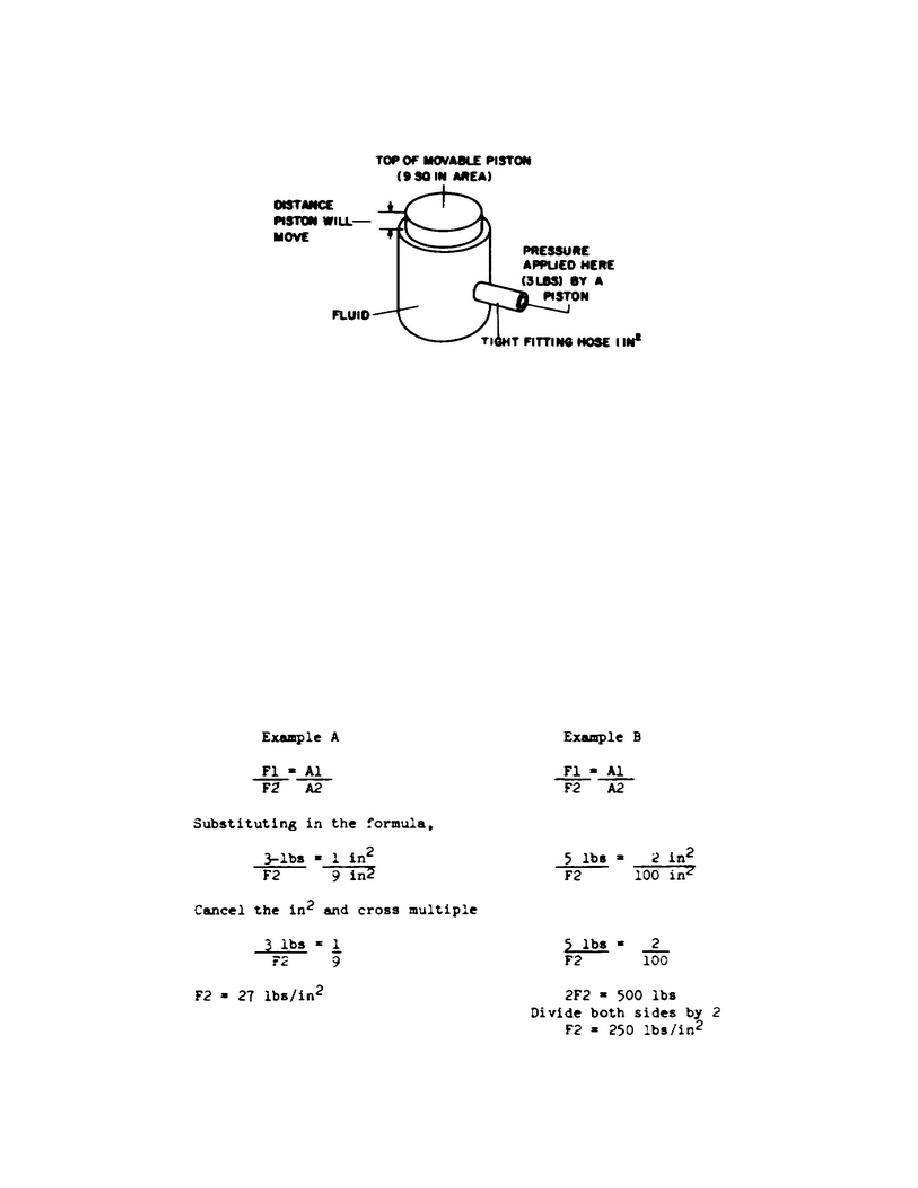
SM0486
Figure 3.
Hydraulic (hydrostatic) press principle
c. The pressure transmitted to the bottom of the movable piston and the
distance the top of the piston moves is determined as follows. Since pressure in a
fluid is transmitted equally in all directions and acts with equal force on equal
surfaces, the 3-pound pressure applied by the hose piston whose inside dimension is
1 in2 is transmitted to each square inch of surface on the bottom of the movable
piston.
Since there are 9 square inches of surface, the total upward force
(pressure) is 3 X 9, or 27 pounds. (See example A below.)
d. In our second example (example B) based upon Figure 3, if the area of the
large piston is 50 times the area of the small piston, then a force of 5 pounds
applied to the small piston applies a total force of 250 pounds/in2 upward against
the large piston.
In simple terms, the total upward force is the product of the
applied force and the ratio of the output (upward) piston area to the input piston
area.
Simple ratios can be used to obtain the same answer.
Referring again to
Figure 3, let the force applied to the piston whose cross-sectional area is 1 in2
be represented by F1 and let F2 represent the total force on the bottom of the
piston. Let the cross-sectional area of the hose piston be represented by A1 and
the area of the large movable piston be represented by A2. The total force is the
47



 Previous Page
Previous Page
